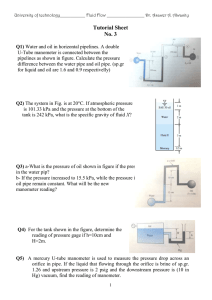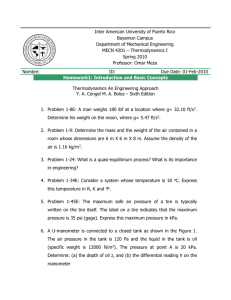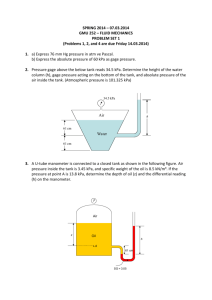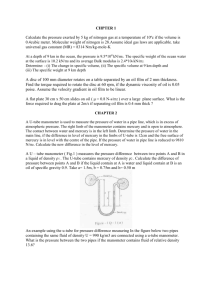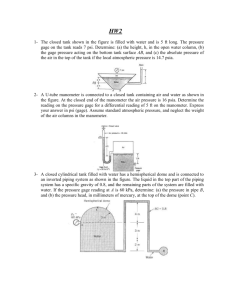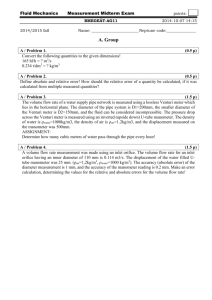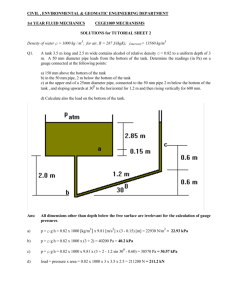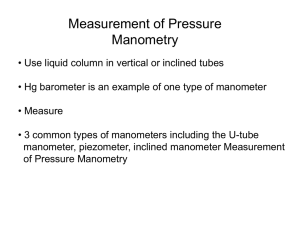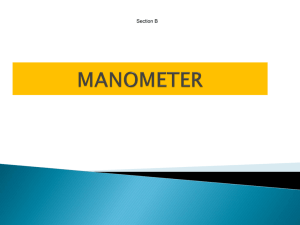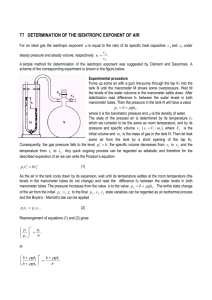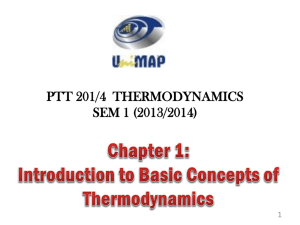Pressure Problems: Fluid Mechanics Exercises
advertisement
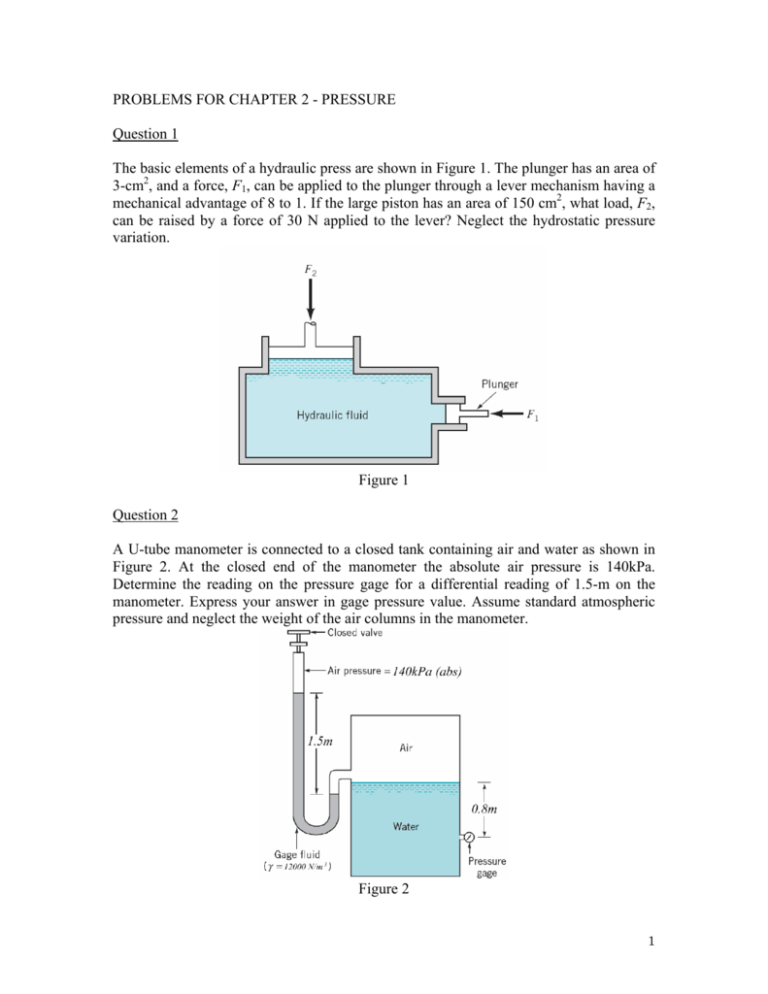
PROBLEMS FOR CHAPTER 2 - PRESSURE Question 1 The basic elements of a hydraulic press are shown in Figure 1. The plunger has an area of 3-cm2, and a force, F1, can be applied to the plunger through a lever mechanism having a mechanical advantage of 8 to 1. If the large piston has an area of 150 cm2, what load, F2, can be raised by a force of 30 N applied to the lever? Neglect the hydrostatic pressure variation. Figure 1 Question 2 A U-tube manometer is connected to a closed tank containing air and water as shown in Figure 2. At the closed end of the manometer the absolute air pressure is 140kPa. Determine the reading on the pressure gage for a differential reading of 1.5-m on the manometer. Express your answer in gage pressure value. Assume standard atmospheric pressure and neglect the weight of the air columns in the manometer. Figure 2 1 Question 3 A closed cylindrical tank filled with water has a hemispherical dome and is connected to an inverted piping system as shown in Figure 3. The liquid in the top part of the piping system has a specific gravity of 0.8, and the remaining parts of the system are filled with water. If the pressure gage reading at A is 60 kPa, determine: (a) the pressure in pipe B, and (b) the pressure head, in millimeters of mercury, at the top of the dome (point C). Figure 3 Question 4 A U-tube manometer contains oil, mercury, and water as shown in Figure 4. For the column heights indicated what is the pressure differential between pipes A and B? Figure 4 2 Question 5 A U-tube manometer is connected to a closed tank as shown in Figure 5. The air pressure in the tank is 120 Pa and the liquid in the tank is oil (γ = 12000 N/m3). The pressure at point A is 20 kPa. Determine: (a) the depth of oil, z, and (b) the differential reading, h, on the manometer. Figure 5 Question 6 The inverted U-tube manometer of Figure 6 contains oil (SG = 0.9) and water as shown. The pressure differential between pipes A and B, pA − pB, is −5 kPa. Determine the differential reading, h. Figure 6 3 Question 7 A piston having a cross-sectional area of 0.07 m2 is located in a cylinder containing water as shown in Figure 7. An open U-tube manometer is connected to the cylinder as shown. For h1 = 60 mm and h = 100 mm, what is the value of the applied force, P, acting on the piston? The weight of the piston is negligible. Figure 7 Question 8 For the inclined-tube manometer of Figure 8, the pressure in pipe A is 8 kPa. The fluid in both pipes A and B is water, and the gage fluid in the manometer has a specific gravity of 2.6. What is the pressure in pipe B corresponding to the differential reading shown? Figure 8 4 Answer : 1. 2. 3. 4. 5. 6. 7. 8. 12 kN 66.8 kPa (a) 103.2 kPa (b) 229 mm -20.7 kPa z = 1.66 m 0.46 mm 892.7 N 5508.3 Pa h = 1.37 m 5
